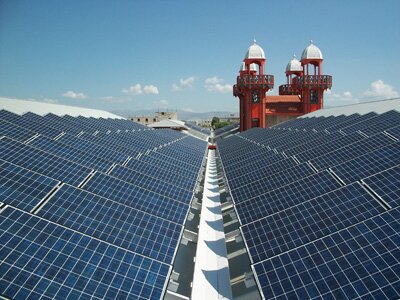
Building a solar power system which can be used in the household is one of the recent trends at present.
Not only because it allows using one’s creativity, but also because it ensures getting a system out of scrap materials that do not cost a huge sum of money.
This means that potential solar power system or solar panel users do not have to worry about spending a huge sum initially, when investing in their chosen systems.
The Advantages Of Container Solar System
An advantage of constructing your residential solar power system is that there is a great abundance of well-organized information, and schematic guidelines about this process from various sources including the web.
These are easy to follow instructions and information required by homeowners in order to build their own system at home.
Just make sure to have typical construction skills to prevent difficulties in converting some containers and conventional electric systems at home with photovoltaic power, into a solar power generating system that will surely work for your home.
For homeowners who are seriously contemplating about building their own solar panels without the help of professionals, they should keep in mind that whether their preferred system is one with a simple or an intricate design, each solar panel used in the system should come with 3 vital components.
These are the basic wiring, a used container and photovoltaic panel.
The good thing about using solar power on a DIY container home is that it prevents the need to spend money on expensive materials. It is possible to grab any reasonable size of used container at home and add this into your system.
Solar cell is also significant because it is the vital part of the photovoltaic panel which produces energy. Without the use of relocating components, the photovoltaic solar cell can be expected to work in gathering energy from the rays of the sun and alters this instantly into functional electricity.
The best way to start is to create a durable container for your solar battery. It is possible to use products available at hardware stores when doing this.
The next step, after the production of the container, is the installation of the solar cell within your built container. Affixing simple wiring should come next.
Placing your DIY container containing some parts of the system in the sunshine helps in allowing the system to start generating electrical power.
Creating your own solar system with multiple panels is also possible. It involves the development and installation of a solar system consisting of multiple containers containing solar cells.
The use of multiple containers is beneficial because this can offer enough electricity to a huge part of your home, thereby meeting the majority of your power requirements.
The simplicity of the design of this system also makes it possible to develop additional single solar panels to enhance the multi-panel system’s size.
An advantage of successfully building your own solar system at home is that it brings you closer to your aim of saving a substantial amount on electricity.
Solar panels are popular for being highly efficient. This means that these systems have high energy-efficiency ratings, making them capable of reducing your electricity bills.
The use of a solar system also allows users to contribute in saving the environment, aside from enjoying substantial financial savings.
